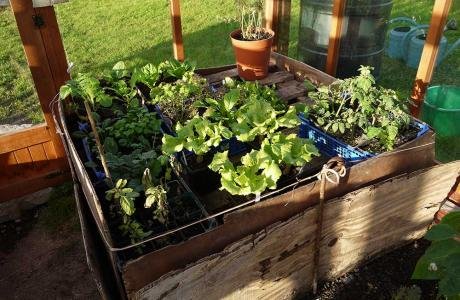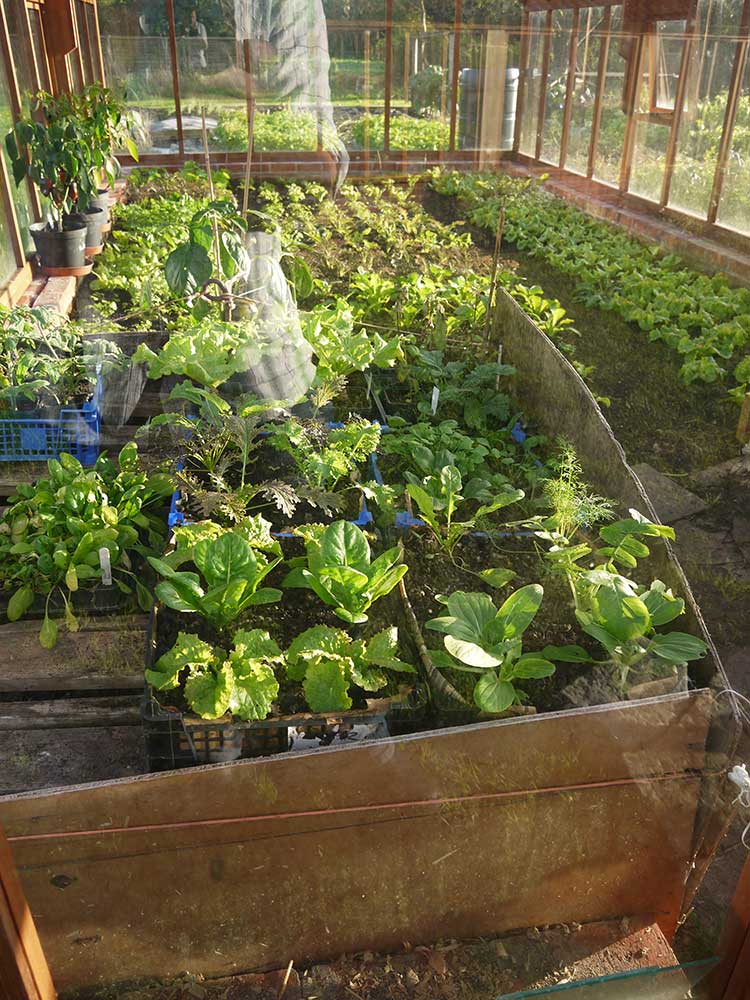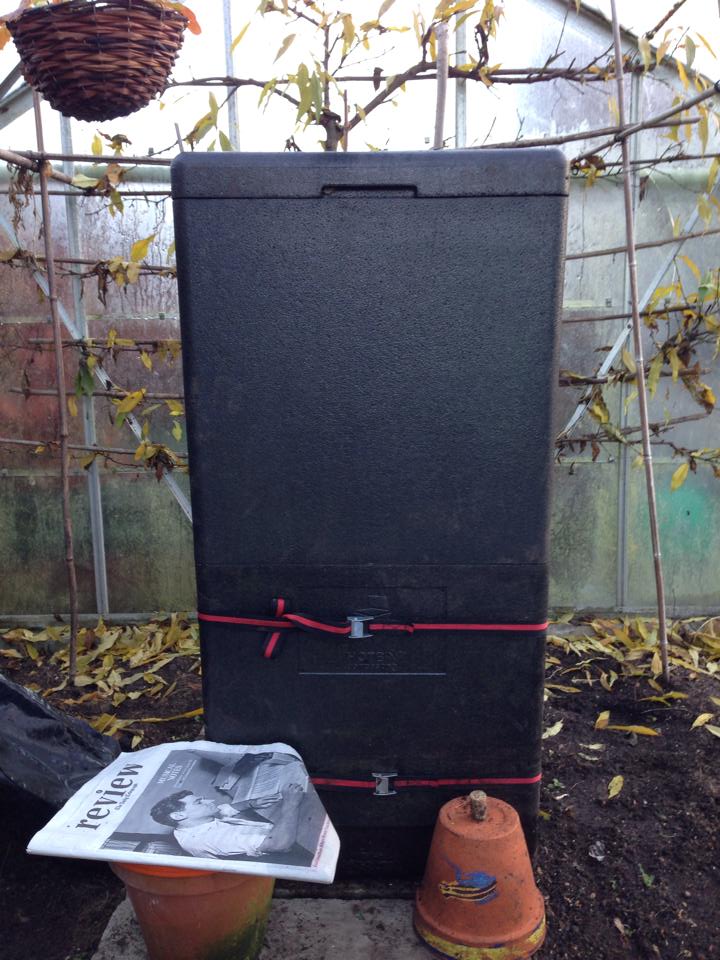Heating a Greenhouse with Compost and Manure
By: Maddy Harland
Maddy visits Charles Dowding's No Dig market garden and is inspired by his hot bed that both heats his greenhouse and helps raise tender plants. She goes home and experiments with hot composting in mid winter to heat a small greenhouse.

"Last November I had the privilege of visiting no dig gardeners Steph Hafferty and Charles Dowding at Charles' house in Somerset. We had a tour of his market garden which was only set up in early 2013 yet was beautifully productive in our English late autumn. Then we retired to his passive solar conservatory and ate a delicious lunch, all out of the garden of course."
"Many aspects of that day inspired me and I will write up Charles' garden and his various experiments with no dig techniques more fully later on, but one immediate idea I took home for the colder months was the way Charles uses compost to create hot beds. In one corner of the greenhouse he uses bits of plywood or other waste board secured with old round steel fencing pins tied together."
"He then fills the structure with fresh manure, then adds a wooden pallet on the top. The heap, having adequate mass, heats up, even in winter. It not only raises the temperature of the greenhouse, but also works as a hot bed. Charles places germinating and tender plants on the pallet on top of the heap."
The composting manure radiates heat and the plants grow at a faster rate than if they were in an unheated greenhouse. Of course, when the sun shines it is a win-win situation: the greenhouse heats up even more and the heap composts even more efficiently, raising the temperature and giving the plants even more encouragement to grow. It is an ideal microclimate as Victorian gardeners knew well.
Here's his stunning wooden framed greenhouse in late November. It was an unusually warm month, but even so it's still a fantastic collection of salads that Charles is growing here.

"I came home and looked at my modest greenhouse. What could I do to introduce a similar system? I pondered on building a pallet container in the corner but my structure is too small (it is 10 x 6 feet or 3.04 x 1.82 metres) and I doubt a smaller uninsulated composter would generate enough heat. Brainwave! Move the Hotbin – a highly insulated black composter that I had been experimenting with outside – into the greenhouse."
"First of all I cleaned the greenhouse thoroughly. Then I dismantled and moved the Hotbin. I was delighted to find an abundant worm colony had established itself in the bin and some very good looking compost!"

"Then I began to refill the bins in layers. Woody matter at the bottom, then layers of semi-composted kitchen waste from the bin, garden trimmings and weeds of all kinds, shredded newspapers and some woody materials to keep the carbon/nitrogen balance." The idea is to get the bin composting hot so it doesn't matter if there are pernicious weeds as any weed roots or seeds won't survive.
"I filled the bin right to the top and have refilled it every few days. I have discovered that to keep a Hotbin running at 40ºC and more it needs to be fully loaded. This became my holiday labour of love. We cooked festive food and put every uncooked kitchen scrap and veg trimmings into the bin plus any other organic matter I could find."
John Adams also gave me a couple of bags of fresh horse manure. "Here's your Christmas present!" he said. I was delighted and found that adding a shovel full at a time has raised the temperature by a few degrees more.
"So this is my small greenhouse system. The Hotbin is chugging along a 40-43ºC inside the heap. The thermometer on the top of the bin reads around 30ºC. The greenhouse hasn't dropped below 3ºC even though it has been very frosty on a few nights. The temperature inside varies depending on the weather: on a cold day it has reached 11ºC, but on a sunny day it can obviously much warmer. My espaliered peach is dropping leaves (that go into the composter) but my lemon verbena is still in leaf!"

Worrying about my worms frying? Although the core of the heap is at least 40ºC, there are cooler corners in the bin and they are not trying to escape. I even spotted a saddle this morning, meaning they are breeding in January.
"My plan is to compost hot with no weeds and after three months add this lovely fresh organic matter to my greenhouse borders in time for the new growing season. If we have a cold spring I will start another hot heap to stop the greenhouse dropping below freezing. If it is warm I will move the Hotbin back outside. I can't rig up a pallet sized hot bed like Charles' as I don't have the room, but I can radiate some heat from this hot, black beast. I will also experiment with bringing on seedlings from my heated propagator on the top of it."
"Of course if I was doing this scientifically, I would have a 10 x 6 control greenhouse without a hot composter side by side my heated one so I could compare the temperatures but I don't, so I will leave experimentation to a better resourced permaculturist."
"I am also thinking that readers who can't afford the sum of money required to buy a Hotbin might be able to rig up a similar device out of boarding rather like Charles' composter."
Further Resources
Read Maddy and John Adam's review Hotbin Composting
Buy a Hotbin Composter and all the extras from Green Shopping at a special discounted price.
Read How to Make Hot Compost
Watch this inspiring video 500 showers heated from one small compost pile: a how to tutorial
Read Make a Low Heat Retaining DIY Compost Tumbler
Charles Dowding's Organic Gardening - the Natural No Dig Way
Charles Dowding runs an informative website about No Dig gardening and teaches courses for market gardeners and home growers (that include the delicious lunch!).
source
https://www.permaculture.co.uk/articles/heating-greenhouse-compost-and-manure